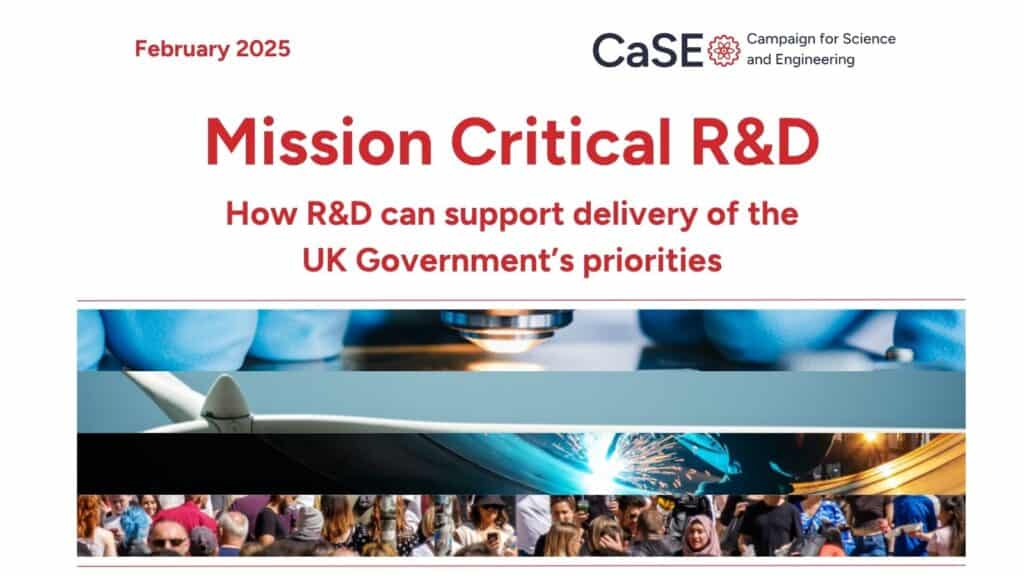Latest ONS figures bring good and bad news for government investment in R&D
07 Apr 2015
New analysis shows the proportion of government spending invested in UK R&D has been decreasing since 2003, putting us below international averages and competitor nations. In 2003 1.37% of total government spending went on R&D. In 2013 this figure had dropped to 1.18%, or £8.4 billion.
We’ve analysed new figures released by the Office for National Statistics on Gross Domestic Expenditure on R&D (GERD). The stats show that GERD rose 5% in real-terms in 2013, reaching an all-time high of £28.9 billion. However, this equals 1.67% of GDP, a slight increase from 2012 but still below the European average of 2% and far lower than in the past. The government’s contribution to the UK’s total R&D spend was 0.49% of GDP.
UK R&D is higher than ever before in real terms
The good news is that £28.9 billion was spent on R&D performed in the UK in 2013. This is a cash-terms increase of £1.9 billion, or 7% from 2012. If inflation is taken into account, in constant prices, this represents a 5% increase and an all-time high, beating the last peak in 2011.

Business is by far the largest funder of R&D in the UK, contributing £13.3 billion in 2013, 46% of the total. This was up £750 million in constant prices from 2012. The pharmaceutical industry was the largest business investor at £4.1 billion and the automotive industry was second at £2.1 billion.
Government, including research councils and higher education funding councils, is the second largest funding sector, investing £8.4 billion in UK R&D activity, 29% of total funding. This is up by £555 million from 2012 in constant prices.
The dip in government investment in 2012 can largely be accounted for by the £400 million lower capital investment that year following the 2010 Spending Review. Capital investment has since increased considerably. Nonetheless, government contribution to GERD has been on a steady but significant decline.
Government investment in R&D hasn’t kept pace with overall spending
As a proportion of GDP, government investment in R&D increased from 0.46% in 2012 to 0.49% in 2013 but has been on an overall decline since 2009 and is still lower than in 2003. The picture is even worse if you look at it as a proportion of total government spending – or as economists call it, Total Managed Expenditure. In 2003 1.37% of total government spending went on R&D. In 2013 this figure was 1.18%. Between 2003 and 2013 government spending increased by 56% but spending on investment in R&D only increased by 34%.

Science is Vital have calculated government R&D spend in 2012 to be 0.48%. The slight difference between ours and theirs is due to revisions to GDP figures by the government.
What does this tell us?
It’s great news that the investment in R&D in the UK has increased on last year and that government investment rose slightly in 2013. But the overall downward trend in government investment is very concerning. The next government will need to act decisively to reverse it – CaSE has called on the all the political parties to commit to increase government investment in R&D over 10 years to reach the level of Germany, which is 0.84% of GDP.

briefing on UK Gross Domestic Expenditure on R&D
Download AnalysisRelated resources

CaSE analysis of Government Expenditure on R&D (GovERD) statistics for 2023.

CaSE takes a look at the details of the DSIT 2025/26 spending allocations, including UKRI.

Analysis and highlights from CaSE’s research into public attitudes towards R&D and the Government’s missions.

This report sets out evidence on the integral role of R&D in driving progress on the UK Government’s missions.